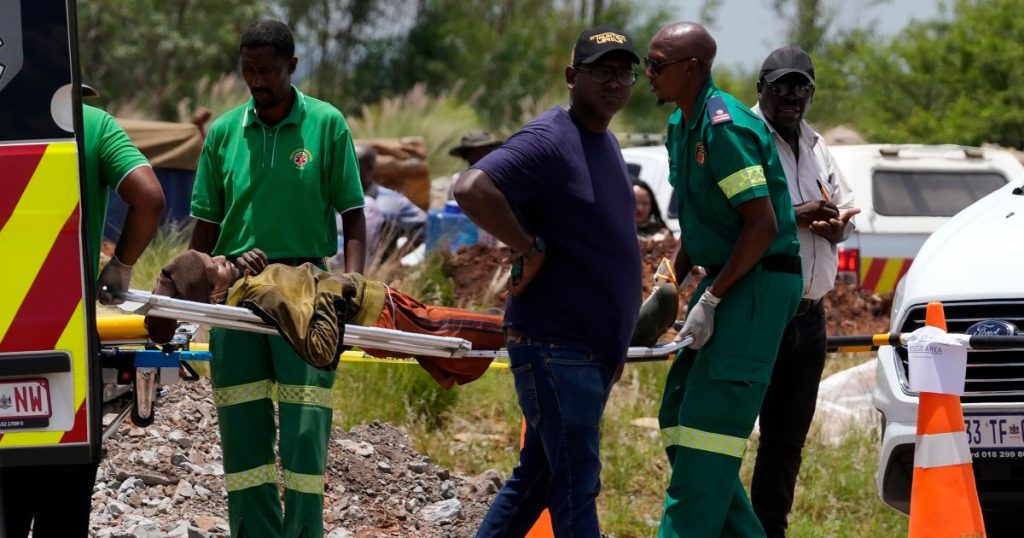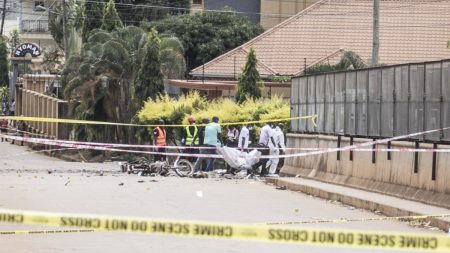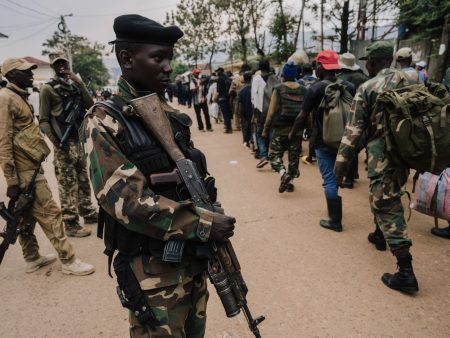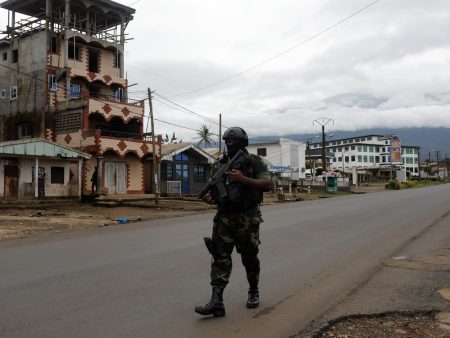The tragic incident at the Stilfontein mine in South Africa, where at least 78 illegal miners perished, likely due to starvation, highlights a complex interplay of socioeconomic factors, government policies, and human rights concerns. The months-long standoff between authorities and the trapped miners unfolded as a slow-burning crisis, marked by accusations of government inaction, allegations of human rights violations, and a belated rescue operation. The incident has raised serious questions about the government’s handling of the situation and the precarious conditions faced by illegal miners in the country.
The ordeal began in September 2024 when hundreds, possibly thousands, of suspected illegal miners, known locally as “zama zamas,” became trapped in the extensive tunnel network of the abandoned Stilfontein mine. Police, as part of their “Close the Hole” operation aimed at curbing illegal mining, surrounded the mine and cut off supplies, intending to force the miners out. However, this strategy backfired as the miners became trapped deep underground without adequate food or water. Activists argued that the police effectively sealed off accessible exits, leaving the miners stranded in a vast subterranean labyrinth. Despite pleas from families and community members, authorities initially resisted launching a rescue mission, opting instead for a strategy they termed “smoking them out,” a statement that drew widespread condemnation from human rights groups.
A court order in October finally compelled the police to allow limited food and water to be sent down to the trapped miners, and some were pulled up using ropes in sporadic rescue attempts by community members. However, the situation remained dire, and reports of deteriorating conditions within the mine, including accounts of miners resorting to cannibalism, continued to surface. Further legal action in January, prompted by videos showing piles of dead bodies inside the mine, finally resulted in a court order mandating a full-scale rescue operation. The rescue, which commenced in February, revealed the horrific extent of the tragedy, with dozens of bodies recovered alongside emaciated survivors.
The Stilfontein tragedy underscores the pervasive and complex issue of illegal mining in South Africa. Thousands of informal miners, often undocumented migrants from neighboring countries, operate in abandoned or unsafe mines across the country, driven by poverty and the lure of precious metals like gold. These operations, estimated to cost South Africa billions of dollars annually in lost revenue, are often controlled by criminal syndicates that exploit the miners and engage in violent turf wars. The zama zamas, often viewed as criminals, face extremely hazardous working conditions, using rudimentary tools to extract ore in unstable shafts, remaining underground for extended periods, and relying on external contractors for essential supplies.
The government’s response to the Stilfontein crisis has been met with severe criticism. Authorities have defended their actions, placing blame on the mine owners for failing to secure the site and on the criminal syndicates orchestrating the illegal mining operations. They have also argued that the “Close the Hole” operation was necessary to address the widespread problem of illegal mining. However, human rights groups have accused the government of negligence and of using starvation as a tactic to force the miners out, resulting in a preventable “massacre.” They argue that the authorities failed to adequately assess the conditions underground before launching the operation and disregarded the human rights implications of their actions.
The tragic events at Stilfontein have ignited a public outcry and calls for accountability. Opposition parties are demanding a full investigation into the government’s handling of the crisis, including the role of various government agencies, the mine owners, and the police. The incident has also brought into sharp focus the plight of illegal miners, often marginalized and vulnerable individuals driven to desperate measures by economic hardship. The tragedy serves as a stark reminder of the urgent need for comprehensive solutions to address the root causes of illegal mining, including poverty, unemployment, and the lack of opportunities in neighboring countries, while simultaneously upholding the human rights of all individuals, regardless of their legal status.
Beyond the immediate crisis, the Stilfontein tragedy raises broader questions about South Africa’s approach to illegal mining. While the government has a legitimate interest in curbing illegal activities and securing abandoned mines, the heavy-handed tactics employed in the “Close the Hole” operation appear to have exacerbated the situation, leading to a humanitarian disaster. Critics argue that a more nuanced approach, incorporating social and economic interventions alongside law enforcement efforts, is necessary to address the complex problem of illegal mining. This could involve providing alternative livelihood opportunities for potential zama zamas, strengthening border security to control the influx of undocumented migrants, and collaborating with neighboring countries to address the underlying socioeconomic factors driving people to seek dangerous work in South Africa’s mines.
The incident also highlights the often-dehumanizing portrayal of zama zamas in public discourse. The perception of these miners as criminals, amplified by government rhetoric and media narratives, can contribute to a lack of empathy and hinder efforts to address their precarious situation. Recognizing the complex motivations and vulnerabilities of these individuals is crucial for developing effective strategies to tackle the issue of illegal mining. This includes acknowledging the role of poverty, exploitation by criminal syndicates, and the lack of alternative employment opportunities in driving people towards this dangerous and often deadly occupation.
In the aftermath of the Stilfontein tragedy, there are calls for greater transparency and accountability. A thorough investigation into the events leading up to the deaths of the miners is necessary to understand the full extent of the government’s responsibility and to identify any systemic failures that contributed to the crisis. This investigation should also examine the role of the mining company in securing the abandoned mine and the actions of the police in implementing the “Close the Hole” operation. The findings of the investigation should be made public and used to inform policy changes and improve future responses to similar situations.
Moreover, the incident underscores the need for greater engagement with the communities affected by illegal mining. Local communities often have valuable insights into the dynamics of illegal mining operations and can play a crucial role in developing sustainable solutions. Consultations with community leaders, activists, and the families of miners can help inform policies that address both the security concerns and the socioeconomic factors driving illegal mining. Such engagement is essential for building trust and ensuring that interventions are effective and respectful of human rights.
Finally, the Stilfontein tragedy serves as a grim reminder of the human cost of illegal mining. The 78 miners who perished in the abandoned mine represent not just a statistic but individual lives lost under preventable circumstances. Their deaths highlight the urgent need for a more humane and comprehensive approach to address this complex issue, one that prioritizes both security and the protection of human rights.










